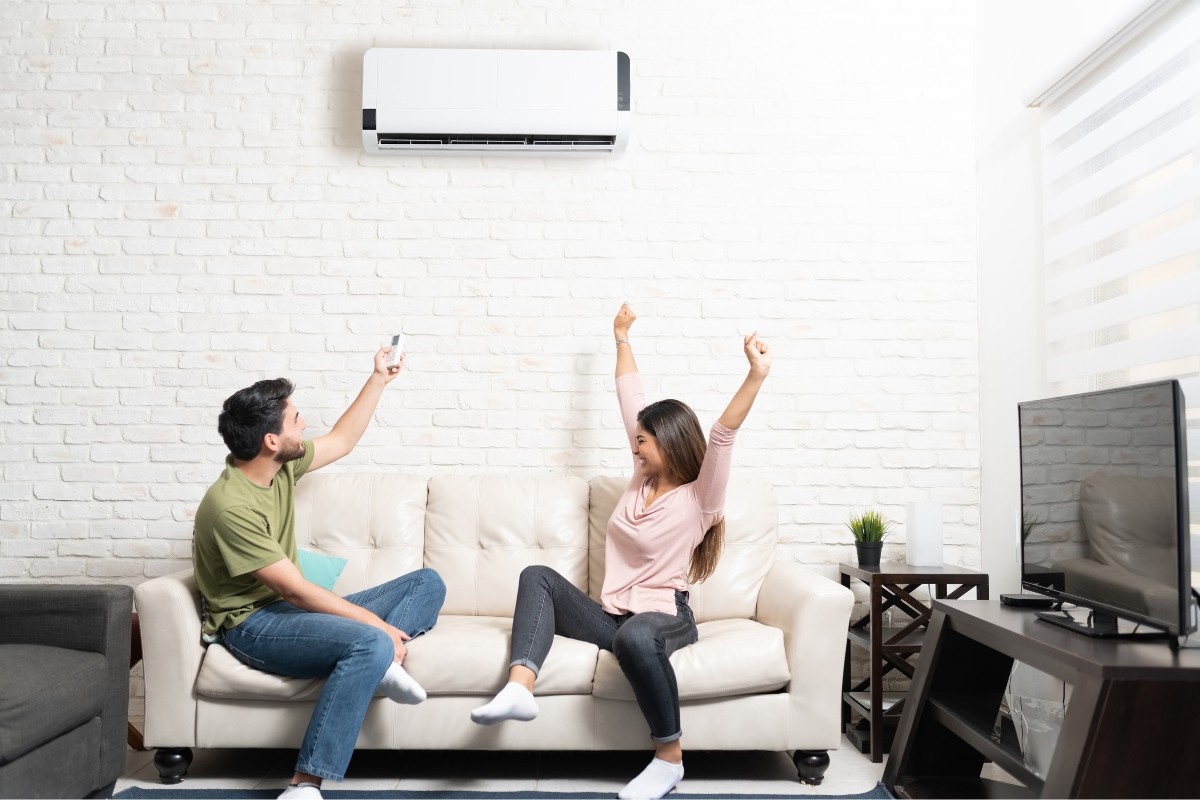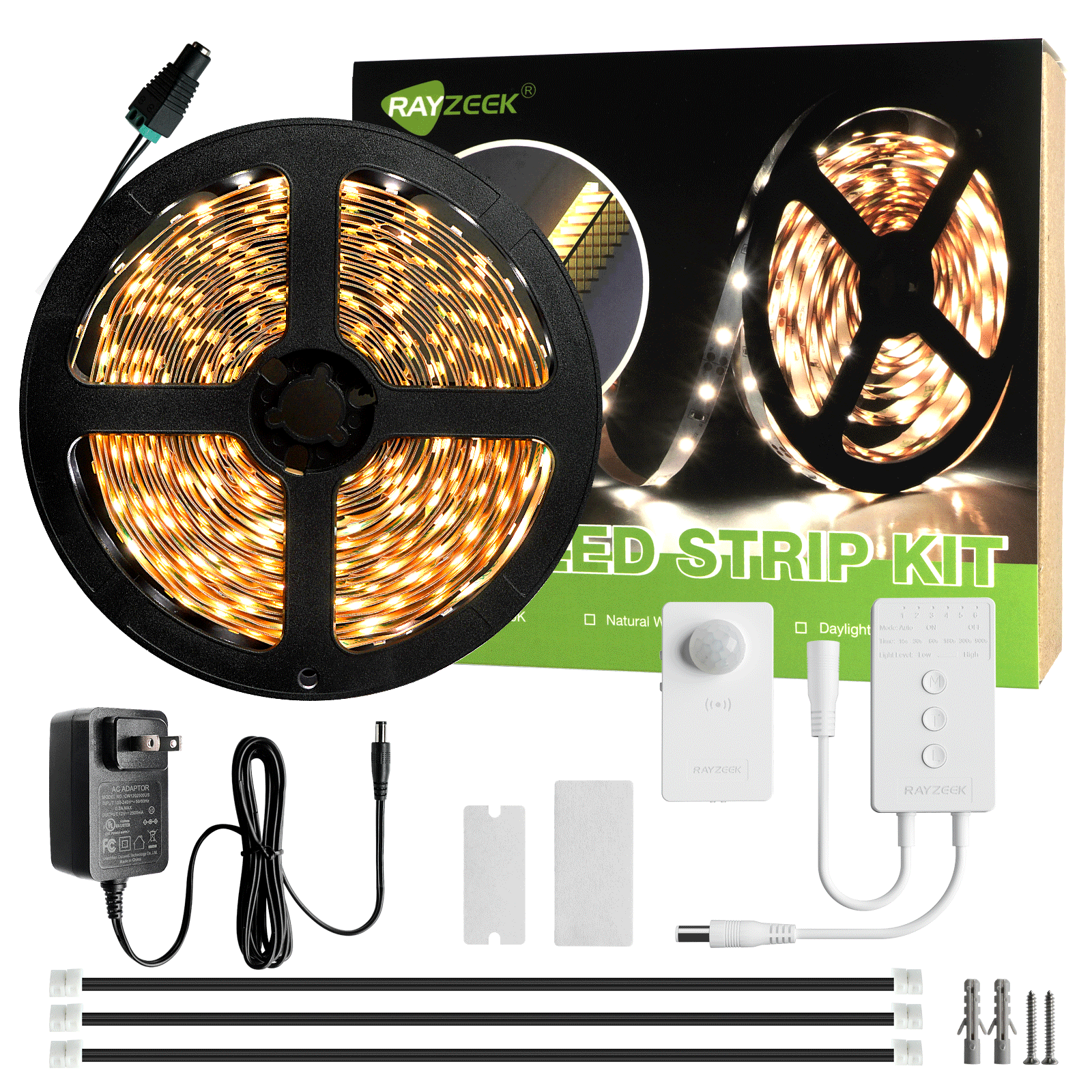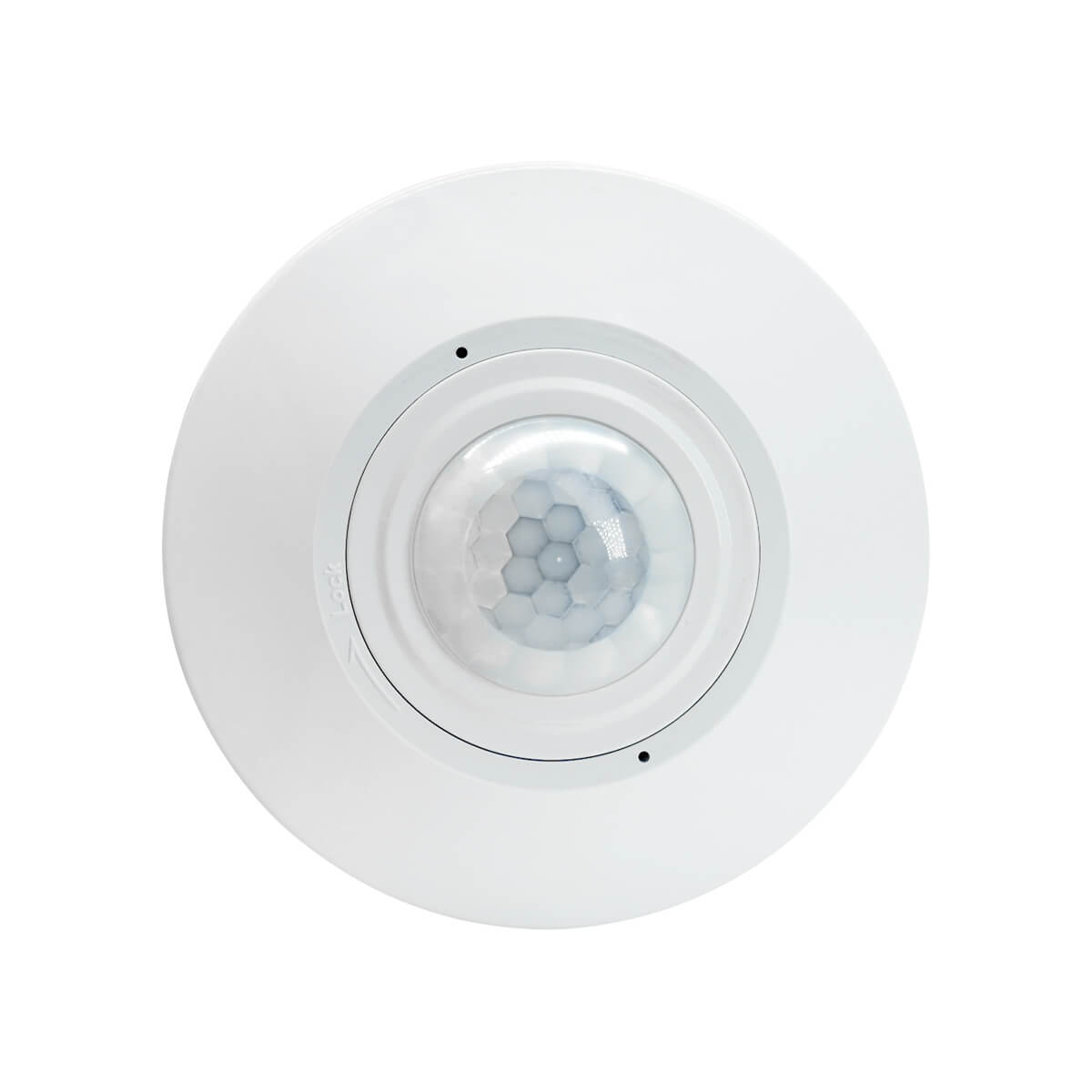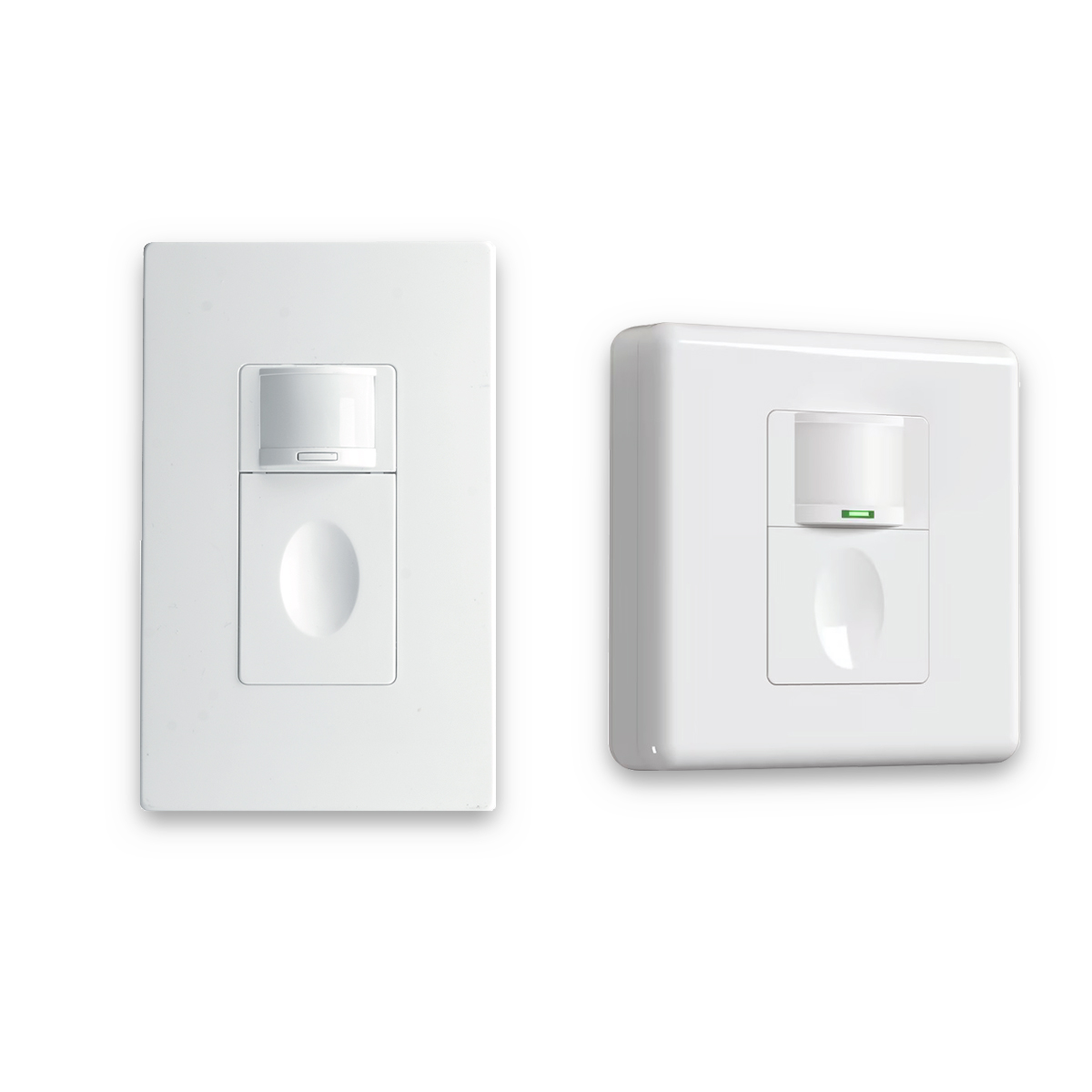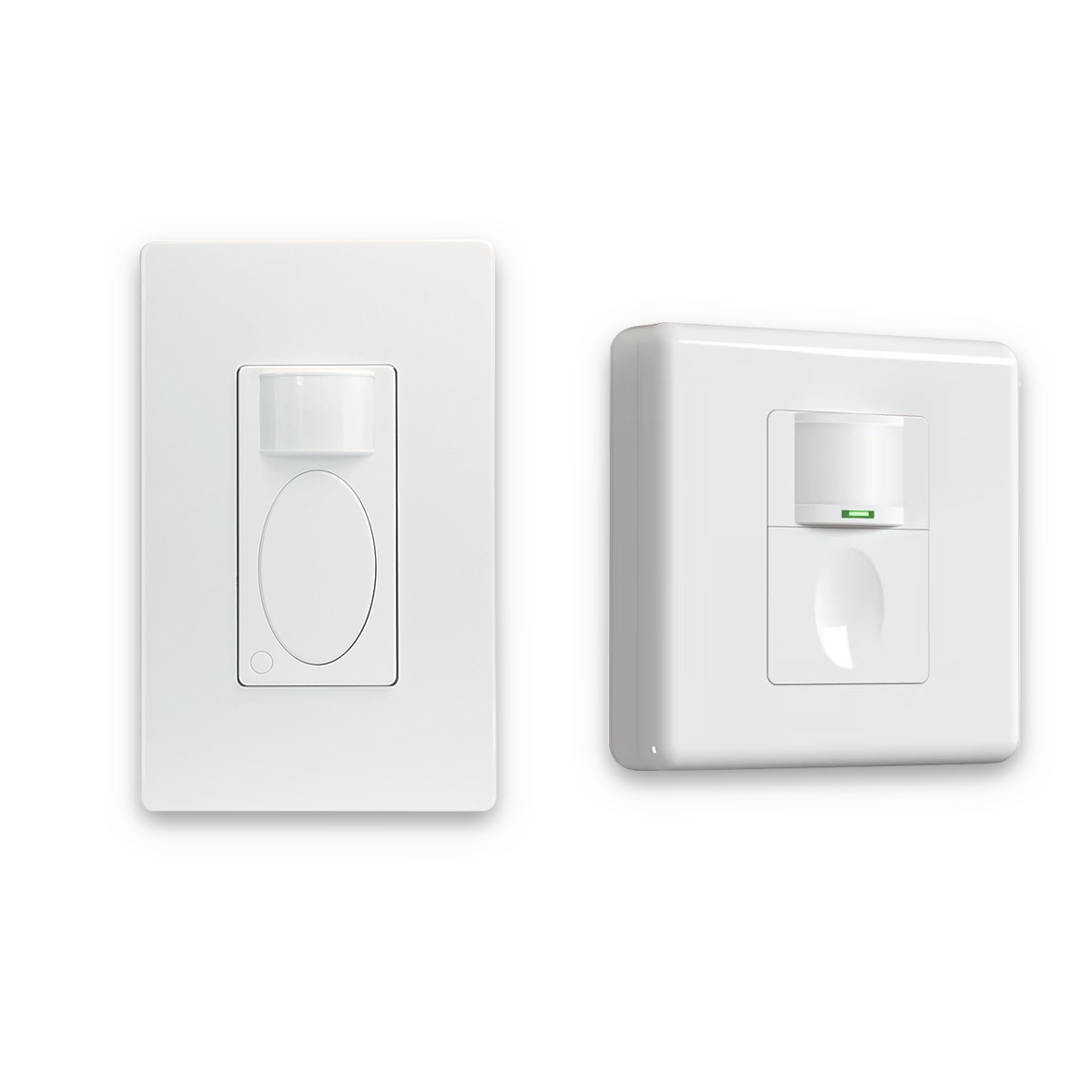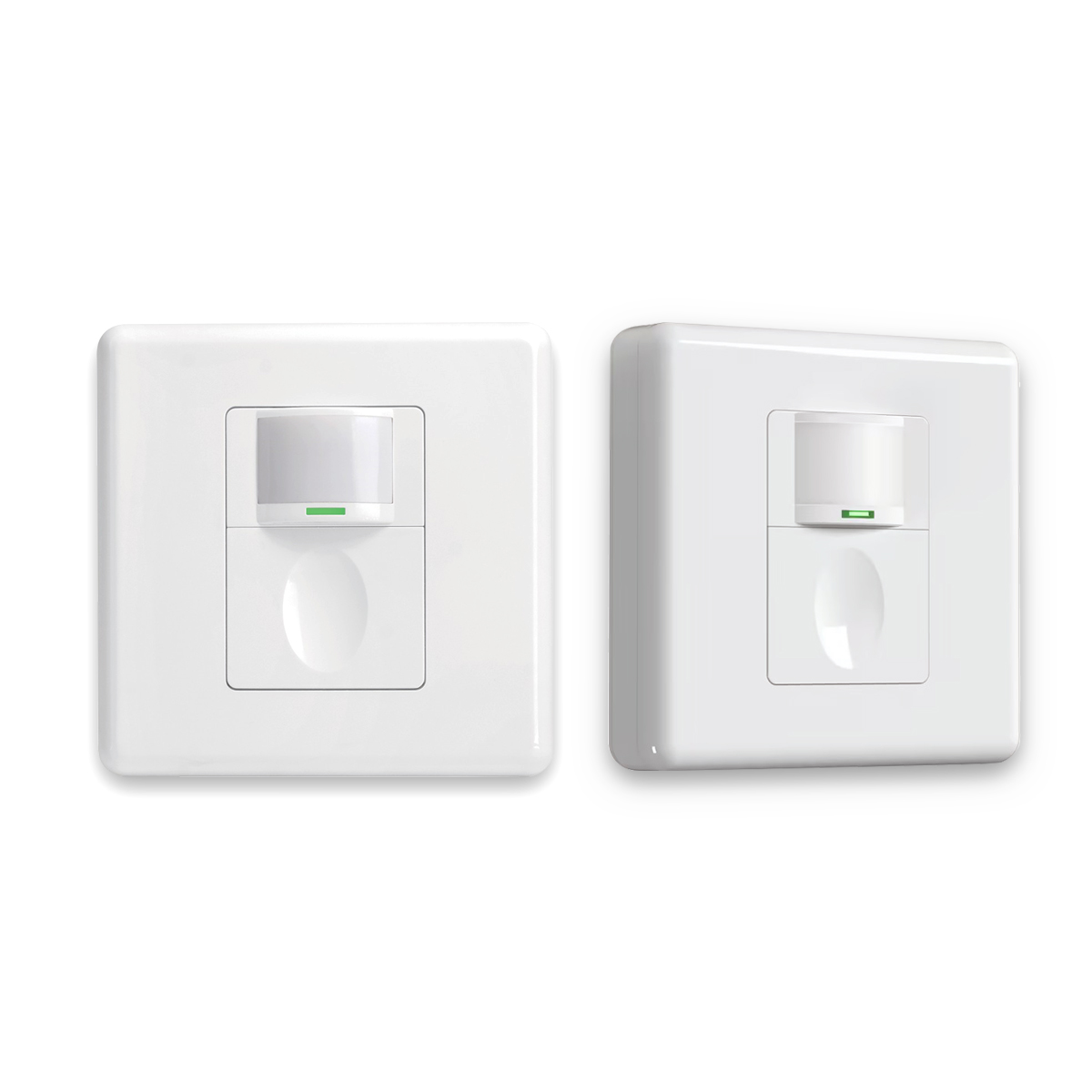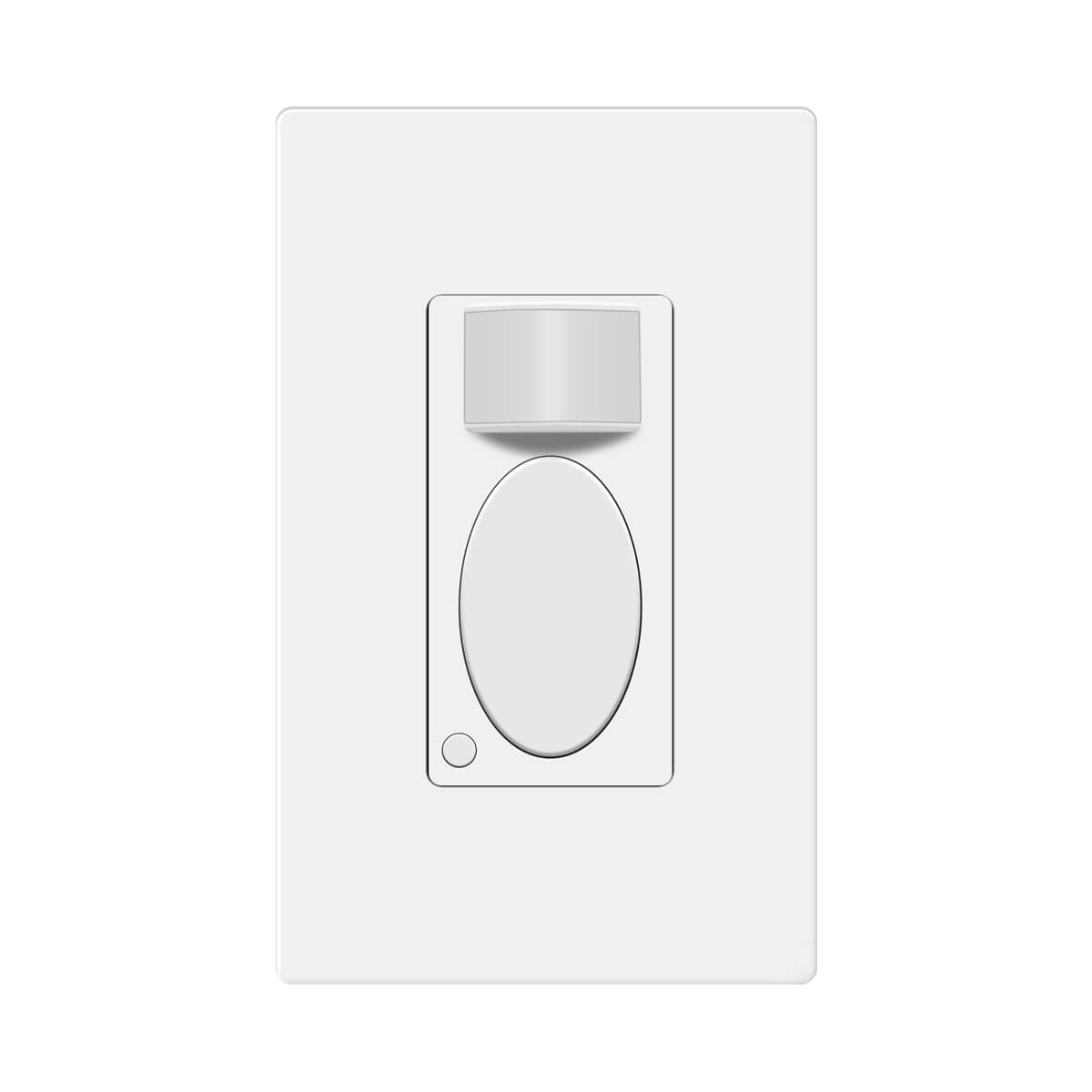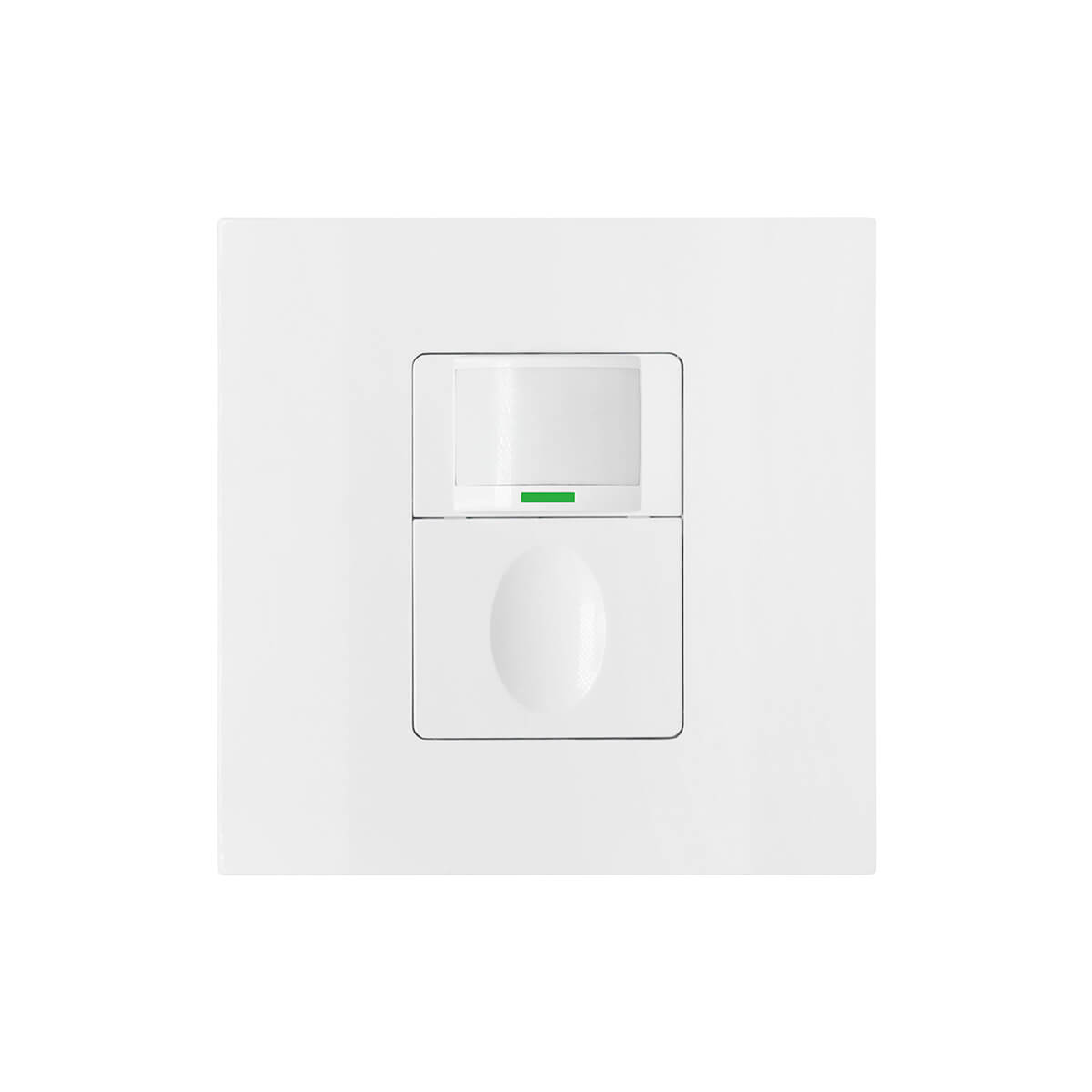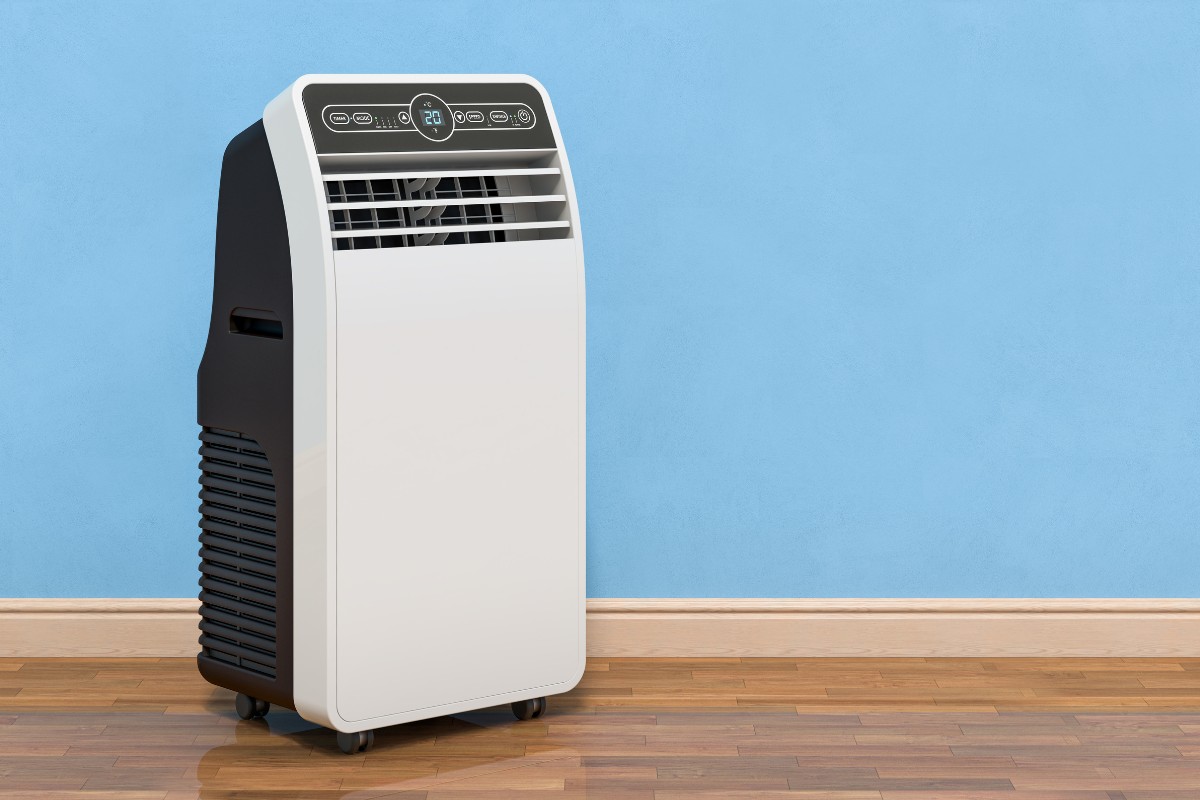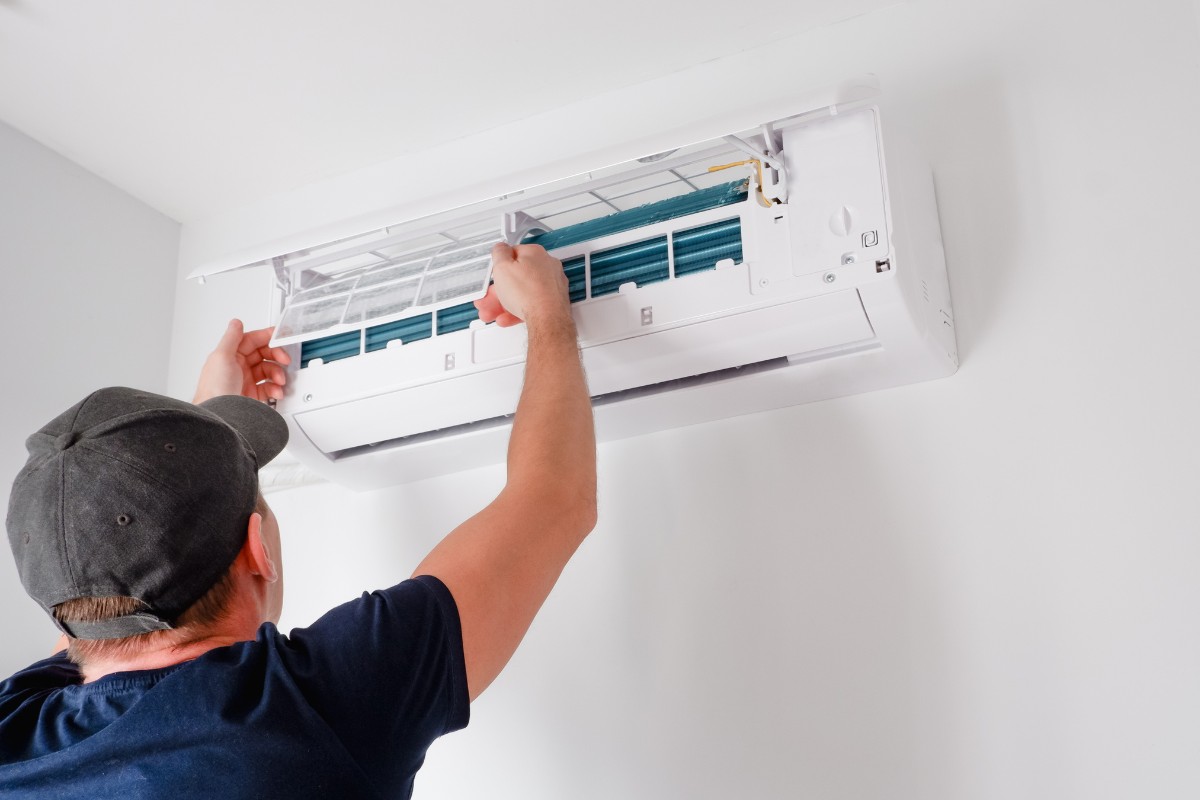В эпоху, когда энергоэффективность и индивидуальный комфорт приобретают все большее значение, многие переосмысливают свои возможности по охлаждению и обогреву дома. Вы когда-нибудь задумывались, есть ли более эффективный способ охлаждения дома, чем традиционное центральное кондиционирование или шумные оконные блоки? Вводим мини-сплит кондиционер, бесканальную систему, которая быстро набирает популярность. В этой статье представлен полный обзор мини-сплит-систем, рассматриваются их компоненты, работа, преимущества, недостатки и сравнение с другими вариантами охлаждения. Если вы просто интересуетесь этой технологией или являетесь опытным исследователем, ищущим глубокую информацию, это руководство поможет вам получить полное представление о мини-сплит кондиционерах.
Что такое мини-сплит кондиционер?
Мини-сплит кондиционер, также известный как бесканальный мини-сплит, - это тип системы отопления и охлаждения, которая обеспечивает кондиционированный воздух без необходимости прокладки традиционных воздуховодов. В отличие от центральных систем кондиционирования, которые используют сеть воздуховодов для распределения воздуха по зданию, мини-сплиты используют отдельные внутренние блоки, подключенные к наружному компрессору/конденсатору через линии хладагента.
Каждый внутренний блок отвечает за охлаждение (или обогрев) определенной зоны или участка. Это позволяет независимо регулировать температуру в разных частях здания. Представьте себе, что вы можете поддерживать ночную прохладу в спальне, не замораживая при этом остальную часть дома! Мини-сплиты - это эффективная и гибкая альтернатива традиционным системам отопления, вентиляции и кондиционирования, особенно в тех случаях, когда прокладка воздуховодов нецелесообразна или требует больших затрат, например, в старых домах или новых пристройках.
Типы мини-сплит-систем
Мини-сплит-системы бывают двух основных конфигураций: однозонные и многозонные.
Однозональные мини-сплиты
Однозонные мини-сплит-системы - это самая простая конфигурация, состоящая из одного внутреннего блока, подключенного к одному наружному блоку. Эти системы предназначены для эффективного охлаждения или обогрева одной комнаты или зоны. Они являются идеальным решением для небольших помещений, пристроек к дому или комнат, которые недостаточно обслуживаются центральной системой отопления, вентиляции и кондиционирования. Например, однозональная система может стать идеальным решением для недавно отделанного подвала, домашнего офиса или солярия, в котором летом бывает слишком жарко.
Многозональные мини-сплиты
Мультизональные мини-сплит-системы делают еще один шаг вперед, подключая несколько внутренних блоков к одному наружному. Такая конфигурация позволяет охлаждать или обогревать несколько помещений или зон независимо друг от друга, в каждой из которых устанавливается своя температура. Мультизональные системы хорошо подходят для больших домов или зданий, где в разных помещениях требуются разные температуры. Например, вы можете установить один блок для охлаждения гостиной, другой - для кухни, а также отдельные блоки для каждой спальни, подключенные к одному наружному блоку. Несмотря на большую гибкость и возможность настройки, многозональные системы обычно дороже однозональных.
Выбор правильного размера мини-сплита
Правильный выбор размера имеет решающее значение для оптимальной производительности и эффективности мини-сплит-системы. Холодопроизводительность кондиционеров измеряется в британских тепловых единицах (BTU). BTU - это количество тепла, необходимое для повышения температуры одного фунта воды на один градус по Фаренгейту. По общему правилу, вам потребуется около 20 BTU на квадратный фут жилой площади.
Однако на требуемый размер могут влиять несколько факторов:
- Размер комнаты (квадратный метр): Для больших помещений требуется большая мощность охлаждения.
- Высота потолка: Более высокие потолки увеличивают объем охлаждаемого воздуха.
- Качество изоляции: Хорошо изолированные помещения лучше удерживают холодный воздух, снижая нагрузку на систему охлаждения.
- Количество и размер окон: Окна могут пропускать значительное количество тепла, особенно если они выходят на юг.
- Местный климат: В жарком климате требуется большая мощность охлаждения.
- Теплогенерирующие приборы: Кухни и комнаты с электроникой могут нуждаться в дополнительном охлаждении.
Важно избегать переразмера или недоразмера системы. Переразмеренные блоки могут привести к короткому циклу, когда блок включается и выключается слишком часто. Это снижает эффективность, сокращает срок службы оборудования и приводит к плохому контролю влажности. С другой стороны, недостаточно мощные агрегаты не смогут обеспечить достаточное охлаждение помещения, что приведет к дискомфорту и повышенному потреблению энергии.
Чтобы точно определить необходимую мощность охлаждения, профессиональные подрядчики HVAC используют расчеты нагрузки Manual J. Эта комплексная оценка учитывает все вышеперечисленные факторы, чтобы убедиться, что система идеально соответствует потребностям вашего дома.
Основные компоненты мини-сплитов
Чтобы понять, как работает мини-сплит, полезно знать его основные компоненты:
Внутренний блок
Внутренний блок, также известный как воздухораспределитель или испаритель, - это часть системы, которую вы видите установленной в помещении. Он может быть установлен на стене, потолке или полу, в зависимости от модели и ваших предпочтений. Внутри него находятся испарительный змеевик, воздушный фильтр, вентилятор и направляющие жалюзи.
Змеевик испарителя - вот где происходит волшебство. Он поглощает тепло из воздуха в помещении, охлаждая его. Вентилятор циркулирует охлажденный воздух по всему помещению, а воздушный фильтр удаляет пыль, пыльцу и другие частицы, находящиеся в воздухе, улучшая качество воздуха в помещении. Жалюзи можно регулировать, чтобы направить воздушный поток для оптимального комфорта, обеспечивая поступление холодного воздуха в каждый уголок комнаты.
Наружный блок
Наружный блок, также известный как компрессорно-конденсаторный блок, располагается снаружи здания, обычно на бетонной площадке. В нем находятся компрессор, конденсаторный змеевик и вентилятор. Компрессор - это сердце системы, циркулирующее хладагент между внутренним и наружным блоками.
Задача конденсатора - отводить тепло, поглощенное воздухом в помещении, наружу. Вентилятор помогает рассеивать это тепло, обеспечивая эффективную работу системы. Наружный блок разработан таким образом, чтобы противостоять стихии и работать бесшумно, не мешая вам отдыхать на природе.
Линии подачи хладагента
Линии хладагента - это медные трубки, соединяющие внутренний и наружный блоки, образуя замкнутый контур, по которому течет хладагент. Существует две основные линии: жидкостная и всасывающая. По жидкостной линии жидкий хладагент под высоким давлением поступает из наружного блока во внутренний блок, а по всасывающей линии пары хладагента под низким давлением возвращаются в наружный блок.
Эти трубопроводы изолированы, чтобы предотвратить потерю энергии и обеспечить эффективную работу системы. Тип используемого хладагента может быть разным, но многие современные системы используют экологически безопасные варианты, такие как R-410A.
Линия слива конденсата
Линия отвода конденсата - это труба небольшого диаметра, по которой отводится конденсат, образующийся во внутреннем блоке. Когда испаритель охлаждает воздух, водяной пар в воздухе конденсируется в жидкую форму. Это похоже на то, как капли воды образуются на внешней стороне холодного стакана в жаркий день.
Вдохновитесь портфолио датчиков движения Rayzeek.
Не нашли то, что хотели? Не волнуйтесь. Всегда есть альтернативные способы решения ваших проблем. Возможно, вам поможет один из наших портфелей.
Линия отвода конденсата выводит эту воду наружу или в дренаж, предотвращая повреждение водой и образование плесени. Правильный дренаж необходим для поддержания здоровой атмосферы в помещении и обеспечения долговечности вашей системы.
Как работает мини-сплит?
Мини-сплиты работают по холодильному циклу - процессу, похожему на работу других кондиционеров. Этот цикл включает в себя непрерывную циркуляцию хладагента между внутренним и наружным блоками, передавая тепло изнутри наружу.
Режим охлаждения:
- Компрессор наружного блока сжимает хладагент, повышая его температуру и давление, превращая его в горячий газ высокого давления.
- Горячий хладагент поступает в змеевик конденсатора, где он отдает тепло наружному воздуху. Вентилятор в наружном блоке помогает рассеивать тепло.
- Потеряв тепло, хладагент конденсируется в жидкость под высоким давлением.
- Жидкий хладагент поступает по жидкостной линии во внутренний блок.
- Во внутреннем блоке хладагент проходит через расширительный клапан, который значительно снижает его давление и температуру.
- Теперь холодный хладагент под низким давлением поступает в змеевик испарителя.
- Теплый воздух в помещении продувается через змеевик испарителя. Хладагент поглощает тепло из воздуха и испаряется обратно в пар под низким давлением.
- Охлажденный воздух циркулирует обратно в помещение, снижая температуру.
- Пары хладагента низкого давления возвращаются в наружный блок через линию всасывания.
- Цикл повторяется непрерывно, поддерживая желаемую температуру в помещении.
Режим отопления (модели с тепловым насосом):
Многие мини-сплит-системы также являются тепловыми насосами, то есть они могут обеспечивать как охлаждение, так и обогрев. В режиме обогрева процесс, по сути, обращается вспять с помощью реверсивного клапана.
- Внутренний блок работает как конденсатор, отдавая тепло в помещение.
- Наружный блок работает как испаритель, поглощая тепло из наружного воздуха даже при низких температурах.
Эта способность к реверсированию холодильного цикла делает тепловые насосы мини-сплит универсальным и энергоэффективным решением для обеспечения круглогодичного комфорта.
Инверторная технология в мини-сплитах
Инверторная технология - это ключевая особенность, которая отличает многие современные мини-сплит-системы от традиционных кондиционеров. В то время как в старых кондиционерах используются компрессоры с фиксированной скоростью, которые включаются и выключаются для поддержания необходимой температуры, в мини-сплит системах с инверторным управлением используются компрессоры с переменной скоростью. Это, казалось бы, небольшое различие оказывает существенное влияние на производительность и эффективность.
Технология компрессора с переменной скоростью
Инверторная технология позволяет компрессору работать на разных скоростях, от низкой до высокой, в зависимости от потребности в охлаждении или обогреве. При большой разнице между желаемой температурой (заданной) и фактической температурой в помещении компрессор работает на более высокой скорости, чтобы быстро охладить или нагреть помещение.
По мере приближения температуры в помещении к заданному значению компрессор замедляется, поддерживая постоянную температуру без необходимости частого включения-выключения. Такой режим работы с переменной скоростью обеспечивает несколько преимуществ:
- Более стабильная и постоянная температура: В системе поддерживается постоянная температура, что позволяет избежать температурных колебаний, характерных для традиционных систем.
- Снижение энергопотребления: Работая, по возможности, на более низких скоростях, система потребляет меньше энергии, что приводит к снижению счетов за коммунальные услуги.
- Более тихая работа: Компрессоры с переменной скоростью обычно работают тише, чем компрессоры с фиксированной скоростью, особенно при работе на низких оборотах.
- Увеличенный срок службы компрессора: Уменьшение количества циклов включения-выключения снижает нагрузку на компрессор, что потенциально продлевает срок его службы.
Дополнительные сведения о размерах
Инверторная технология также обеспечивает большую гибкость при выборе размера мини-сплит-систем. Традиционные системы с фиксированной скоростью вращения требуют точного подбора мощности, чтобы избежать таких проблем, как короткие циклы или недостаточное охлаждение. Однако инверторные системы могут эффективно работать в более широком диапазоне мощностей.
Ищете энергосберегающие решения с функцией активации движением?
Свяжитесь с нами, чтобы получить полный комплект PIR-датчиков движения, энергосберегающих продуктов, выключателей с датчиками движения и коммерческих решений для работы в режиме "занято/не занято".
Тем не менее, правильное определение размеров по-прежнему важно для обеспечения оптимальной производительности и эффективности. Дополнительные соображения по определению размеров для систем с инверторным приводом включают:
- Производительность при частичной нагрузке: Оценка того, насколько эффективно система работает при сниженной мощности, имеет решающее значение, поскольку именно в этом режиме она будет проводить большую часть своего времени.
- Коэффициент разворота: Это минимальная мощность, на которой может работать система. Более низкий коэффициент понижения позволяет более точно регулировать температуру и повышать эффективность при низких нагрузках.
- Размер зависит от климата: Мощность следует регулировать в зависимости от местных климатических условий и количества дней отопления/охлаждения.
- Анализ оболочки здания: Оценка влияния изоляции, герметизации и окон на нагрузку охлаждения помогает определить подходящий размер системы.
- Характер занятости: Учет характера использования помещения и количества людей помогает точно рассчитать размеры.
Преимущества мини-сплит кондиционеров
Мини-сплит кондиционеры обладают рядом неоспоримых преимуществ, которые делают их привлекательным вариантом для многих домовладельцев:
Энергоэффективность
Мини-сплиты известны своей высокой энергоэффективностью по сравнению с традиционными системами ОВК. Они часто могут похвастаться более высокими показателями SEER (Seasonal Energy Efficiency Ratio), часто превышающими 20. Для сравнения, более высокий показатель SEER означает большую энергоэффективность. Инверторная технология играет важную роль в этой эффективности, обеспечивая точный контроль температуры и снижая потребление энергии.
Кроме того, бесканальная конструкция исключает потери энергии, связанные с негерметичностью воздуховодов - распространенной проблемой центральных систем кондиционирования. Зонированное охлаждение еще больше повышает эффективность, позволяя целенаправленно кондиционировать занятые помещения, сокращая потери энергии при охлаждении или обогреве незанятых зон.
Зональное охлаждение
Одно из самых значительных преимуществ мини-сплитов - их способность обеспечивать зонированное охлаждение. Каждый внутренний блок может управляться независимо, что позволяет устанавливать разные температуры для разных зон или комнат. Это не только повышает комфорт за счет учета индивидуальных предпочтений, но и снижает энергопотребление за счет кондиционирования только занятых зон.
Подумайте: зачем охлаждать весь дом до одинаковой температуры, если вы используете только несколько комнат? Зонированное охлаждение устраняет необходимость охлаждать или обогревать незанятые помещения, что приводит к значительной экономии энергии. Однако даже при таком уровне контроля легко забыть выключить кондиционер, выходя из комнаты, особенно если речь идет о занятом доме или офисе. Именно здесь умная автоматика может принести реальную пользу. Например, такое устройство, как RZ050 Датчик движения кондиционера может автоматически отключать вашу мини-сплит-систему, когда комната не занята, гарантируя, что вы не тратите энергию на охлаждение пустого пространства. Этот дополнительный уровень автоматизации максимизирует энергосберегающий потенциал вашей мини-сплит-системы, обеспечивая удобство и душевное спокойствие.
RZ050 Датчик движения кондиционера
Никогда больше не забывайте выключать кондиционер
- Автоматически отключает кондиционер в пустых комнатах, экономя электроэнергию.
- Совместим с большинством сплит-систем.
- Простая установка - просто приклейте или прикрутите к стене.
Бесшумная работа
Мини-сплиты работают значительно тише, чем оконные блоки и многие центральные системы кондиционирования. Внутренние блоки работают с удивительно низким уровнем шума, часто до 19 децибел, что сравнимо со звуком шелеста листьев. Наружные блоки также разработаны для бесшумной работы, что сводит к минимуму шумовое загрязнение.
Инверторная технология еще больше способствует бесшумной работе, снижая колебания шума, связанные с циклическим включением-выключением традиционных компрессоров. Это делает мини-сплиты отличным выбором для спален, гостиных и любых других помещений, где шум вызывает беспокойство.
Простая установка
По сравнению с обширными воздуховодами, необходимыми для центральных систем кондиционирования, мини-сплиты относительно просты в установке. Это сокращает как время, так и стоимость установки. Для установки обычно требуется лишь небольшое отверстие в стене для размещения линий хладагента, конденсатоотводчика и электропроводки.
Простота установки делает мини-сплиты оптимальным вариантом для самых разных помещений, включая старые дома без существующей системы воздуховодов, новые пристройки или даже отдельные комнаты, нуждающиеся в дополнительном охлаждении или обогреве.
Недостатки мини-сплит кондиционеров
Хотя мини-сплиты обладают многочисленными преимуществами, есть и некоторые потенциальные недостатки, которые следует учитывать:
Более высокая первоначальная стоимость
Мини-сплиты обычно имеют более высокую первоначальную стоимость по сравнению с оконными блоками или некоторыми базовыми центральными системами кондиционирования. Однако важно учитывать долгосрочную экономию энергии, которая со временем может компенсировать первоначальные инвестиции. Стоимость может варьироваться в зависимости от таких факторов, как количество зон, мощность системы и ее характеристики.
Эстетические проблемы
Внешний вид внутренних блоков может беспокоить некоторых домовладельцев, особенно в небольших помещениях. Наиболее распространены настенные блоки, но они могут нарушить эстетику помещения. Существуют альтернативные варианты монтажа, такие как потолочные кассеты или напольные устройства, но они могут стоить дороже.
Размещение наружного блока также должно быть продумано с точки зрения визуального воздействия. Несмотря на то, что они обычно проектируются так, чтобы быть незаметными, их все же необходимо размещать в доступном и хорошо проветриваемом месте.
Процесс установки мини-сплитов
Хотя у некоторых рукастых домовладельцев может возникнуть соблазн заняться установкой самостоятельно, для обеспечения оптимальной производительности, безопасности и гарантийного обслуживания настоятельно рекомендуется профессиональный монтаж. Квалифицированный специалист по ОВК обеспечит правильные размеры, установку и настройку системы.
Типичные этапы установки включают:
- Оценка объекта и расчет нагрузки: Техник оценит ваш дом и выполнит расчет нагрузки, чтобы определить подходящий размер и конфигурацию системы.
- Монтаж внутреннего блока (блоков): Внутренний блок (блоки) монтируется на стену, потолок или пол, в зависимости от модели и ваших предпочтений.
- Установка наружного блока: Наружный блок устанавливается на прочной, ровной поверхности, например, на бетонной площадке, в хорошо проветриваемом месте.
- Сверление отверстий для соединений: В стене просверливается небольшое отверстие, обычно диаметром 3 дюйма, для размещения трубопроводов хладагента, конденсатоотводчика и электропроводки.
- Подключение линий хладагента: Линии хладагента будут тщательно соединены между внутренним и наружным блоками, образуя герметичный контур.
- Монтаж линии отвода конденсата: Для отвода конденсата из внутреннего блока будет проложена линия отвода конденсата.
- Подключение электропроводки: Электропроводка будет подключена в соответствии со спецификациями производителя и местными электротехническими нормами.
- Эвакуация трубопроводов хладагента: Линии хладагента будут откачаны с помощью вакуумного насоса, чтобы удалить воздух и влагу, обеспечивая оптимальную производительность.
- Заправка системы хладагентом: Система будет заправлена нужным количеством хладагента.
- Тестирование системы: Техник тщательно протестирует систему, чтобы убедиться в ее правильной и эффективной работе.
Время установки может варьироваться в зависимости от сложности системы, но обычно занимает 4-8 часов для однозонной системы.
Сколько стоит мини-сплит?
Стоимость мини-сплит-системы может сильно варьироваться в зависимости от нескольких факторов:
- Количество зон: Мультизональные системы стоят дороже, чем однозональные.
- Мощность системы (BTUs): Более мощные системы стоят дороже.
- Бренд и модель: Различные бренды и модели имеют разную цену.
- Рейтинг SEER: Более высокие показатели SEER обычно имеют более высокую цену, но обеспечивают большую долгосрочную экономию энергии.
- Особенности: Дополнительные функции, такие как интеллектуальное управление и улучшенная фильтрация, могут увеличить стоимость.
- Сложность установки: Более сложные установки могут потребовать больших затрат на оплату труда.
Средняя стоимость варьируется:
- Однозонная система: \$3,000 - \$6,000 установлено
- Мультизональная система (2-3 зоны): \$5,000 - \$10,000 установлено
- Мультизональная система (4-5 зон): \$8,000 - \$15,000+ установлено
Дополнительные расходы могут включать модернизацию электрооборудования, получение разрешений и продление гарантии. Хотя первоначальные затраты могут показаться высокими, важно учитывать долгосрочную экономию энергии. По сравнению с менее эффективными вариантами охлаждения, мини-сплиты могут со временем значительно снизить ваши счета за коммунальные услуги, что поможет компенсировать первоначальные инвестиции.
Техническое обслуживание мини-сплитов
Регулярное техническое обслуживание необходимо для поддержания эффективной работы вашей мини-сплит-системы, предотвращения поломок и продления ее срока службы.
Рекомендуемые задачи технического обслуживания:
- Очистите или замените воздушные фильтры: Это, пожалуй, самая важная задача по техническому обслуживанию. Грязные воздушные фильтры ограничивают поток воздуха, снижая эффективность и потенциально повреждая систему. Фильтры следует чистить или заменять каждые 1-3 месяца, в зависимости от интенсивности использования и качества воздуха.
- Очистите змеевики внутреннего блока: Пыль и мусор могут скапливаться на змеевиках внутреннего блока, снижая их способность передавать тепло. Эти змеевики следует чистить ежегодно или по мере необходимости.
- Очистите змеевики наружного блока: Змеевики наружного блока также могут загрязняться, особенно если они расположены вблизи деревьев или кустарников. Эти змеевики следует чистить ежегодно или по мере необходимости, чтобы обеспечить надлежащую теплопередачу.
- Проверьте уровень хладагента: Уровень хладагента должен периодически проверяться квалифицированным техником. Низкий уровень хладагента может свидетельствовать об утечке, которую необходимо незамедлительно устранить.
- Осмотрите линию отвода конденсата: Линию отвода конденсата следует регулярно проверять, чтобы убедиться, что она чистая и беспрепятственная. Засорение дренажной линии может привести к повреждению водой и образованию плесени.
- Проверьте электрические соединения: Электрические соединения следует периодически проверять на герметичность и наличие коррозии. Ослабленные или корродированные соединения могут вызвать проблемы с электричеством и снизить эффективность системы.
- Профессиональная настройка: Рекомендуется, чтобы профессиональный техник HVAC проводил ежегодную настройку. Обычно она включает в себя осмотр и очистку всех компонентов, проверку заправки хладагента и обеспечение правильной работы системы.
Правильное обслуживание поможет предотвратить дорогостоящий ремонт, повысить энергоэффективность и продлить срок службы вашей мини-сплит-системы, что в конечном итоге сэкономит ваши деньги в долгосрочной перспективе.
Сравнение мини-сплитов
Чтобы лучше понять преимущества мини-сплитов, давайте сравним их с двумя распространенными альтернативами: центральным кондиционированием и оконными кондиционерами.
Мини-сплит против центрального кондиционера
| Характеристика | Мини-сплит | Центральный кондиционер |
|---|---|---|
| Воздуховоды | Бесканальный | Требуется воздуховод |
| Зональное охлаждение | Да | Ограничено (если не установлена система зонирования) |
| Энергоэффективность | Как правило, выше (более высокие показатели SEER) | Как правило, ниже (более низкие показатели SEER) |
| Установка | Легче, меньше помех | Более сложный, требует установки воздуховодов |
| Первоначальная стоимость | Выше | Нижний (для базовых систем) |
| Операционные расходы | Нижний | Выше |
| Уровень шума | Нижний | Выше |
| Фильтрация воздуха | Зависит от модели, часто доступны дополнительные опции | Зависит от типа фильтра, обычно менее продвинутый |
| Эстетика | Внутренние блоки могут быть навязчивыми | Менее заметные (вентиляционные отверстия в потолке или стенах) |
Резюме: Мини-сплиты обычно обеспечивают более высокую энергоэффективность, зонированное охлаждение и более тихую работу по сравнению с центральными кондиционерами. Однако они имеют более высокую начальную стоимость и могут представлять собой эстетическую проблему из-за внутренних блоков. Центральное кондиционирование - это более устоявшаяся технология, которая может больше подходить для домов с существующей системой воздуховодов.
Возможно, вы заинтересованы в
Мини-сплит и оконные кондиционеры
| Характеристика | Мини-сплит | Оконный кондиционер |
|---|---|---|
| Установка | Более сложный, требует профессиональной установки | Проще, можно установить самостоятельно |
| Эффективность | Значительно выше | Нижний |
| Уровень шума | Гораздо тише | Шумнее |
| Мощность охлаждения | Более высокая, может охлаждать большие площади | Ниже, ограничено одним номером |
| Эстетика | Менее заметный (не загораживает окно) | Препятствует обзору и освещению окна |
| Безопасность | Более безопасно | Может представлять угрозу для безопасности (проще удалить снаружи). |
| Стоимость | Значительно выше | Нижний |
| Фильтрация воздуха | В целом лучше | Основная фильтрация |
Резюме: Мини-сплиты явно выигрывают у оконных блоков по эффективности, уровню шума, холодопроизводительности и эстетике. Однако оконные блоки намного дешевле и проще в установке, что делает их популярным выбором для экономных потребителей или тех, кому нужно временное решение для охлаждения.
Стоят ли мини-сплиты того?
Мини-сплиты могут стать выгодной инвестицией для многих домовладельцев, особенно для тех, кто ставит во главу угла энергоэффективность, зонированный температурный контроль и бесшумное охлаждение. Они особенно хорошо подходят для старых домов без существующей системы воздуховодов, новых пристроек или ремонта отдельных помещений.
Факторы, которые следует учитывать при принятии решения о том, подходит ли вам мини-сплит:
- Первоначальные затраты против долгосрочной экономии: Тщательно оцените первоначальные инвестиции и прогнозируемую экономию энергии в течение всего срока службы системы. Во многих случаях долгосрочная экономия может перевесить более высокую первоначальную стоимость.
- Климат: Мини-сплиты очень эффективны в умеренном климате. Однако в очень холодных регионах они могут потребовать дополнительного обогрева.
- Эстетические предпочтения: Учитывайте визуальное воздействие внутренних и наружных блоков. Если эстетика вызывает серьезные опасения, изучите альтернативные варианты монтажа или рассмотрите другой тип системы.
- Требования к установке: Оцените целесообразность и стоимость установки в вашем конкретном доме.
Долгосрочная ценность:
- Увеличение стоимости дома: Энергоэффективные системы отопления, вентиляции и кондиционирования, такие как мини-сплиты, становятся все более привлекательными для потенциальных покупателей жилья, что потенциально повышает стоимость вашего дома при перепродаже.
- Увеличенный срок службы: При надлежащем обслуживании мини-сплиты могут прослужить 15-20 лет или даже дольше, обеспечивая надежное охлаждение и обогрев в течение многих лет.
- Уменьшение углеродного следа: Повышение эффективности приводит к снижению энергопотребления и выбросов парниковых газов, способствуя более устойчивому будущему.
Кто производит мини-сплиты?
Мини-сплит-системы выпускают многие известные производители, каждый из которых имеет свои сильные стороны и особенности. Вот некоторые из наиболее популярных и хорошо зарекомендовавших себя брендов:
- Daikin: Мировой лидер в области технологий ОВКВ, компания Daikin известна своими инновациями, высокой эффективностью и широким ассортиментом продукции. Они часто считаются брендом премиум-класса.
- Mitsubishi Electric: Mitsubishi Electric предлагает обширный модельный ряд мини-сплит-систем с передовыми функциями, высокой производительностью и репутацией надежного производителя.
- Fujitsu: Fujitsu известна как производитель надежных и энергоэффективных мини-сплитов с акцентом на бесшумную работу. Они предлагают множество моделей для различных потребностей и бюджетов.
- LG: LG предлагает ряд моделей мини-сплитов с элегантным дизайном, интеллектуальной интеграцией технологий и конкурентоспособными ценами.
- Гри: Крупнейший производитель мини-сплитов, компания Gree предлагает широкий выбор вариантов по различным ценам, что делает их популярным выбором для экономных потребителей.
- Носитель: Хорошо зарекомендовавший себя бренд HVAC, Carrier также предлагает мини-сплит-системы, используя свой обширный опыт и репутацию в отрасли.
- Panasonic: Компания Panasonic известна своими инновационными и энергоэффективными мини-сплитами, часто оснащенными передовой технологией очистки воздуха.
При выборе бренда учитывайте следующее:
- Репутация и надежность: Изучите послужной список бренда и почитайте отзывы покупателей, чтобы оценить его качество и надежность.
- Ассортимент продукции: Убедитесь, что бренд предлагает множество моделей, отвечающих вашим потребностям по вместимости, функциям и эстетике.
- Гарантия: Сравните условия гарантии и покрытие, предлагаемые разными брендами. Более длительная гарантия может обеспечить душевное спокойствие и защитить ваши инвестиции.
- Дилерская сеть: Выбирайте бренд с развитой сетью квалифицированных установщиков и сервисных специалистов в вашем регионе. Это обеспечит вам доступ к надежной поддержке в случае необходимости.
- Цена: Сравните цены на различные бренды и модели с аналогичными характеристиками и производительностью.
В конечном счете, очень важно работать с квалифицированным подрядчиком по ОВКВ, который поможет вам выбрать подходящую марку и модель для вашего дома и обеспечит правильную установку. Они оценят ваши конкретные потребности, порекомендуют оптимальную систему, а также обеспечат квалифицированную установку и текущее обслуживание.

